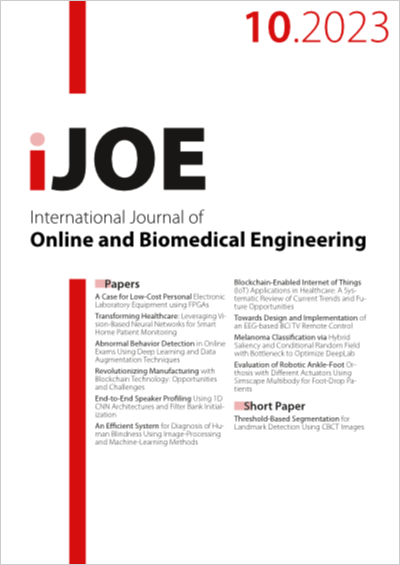Abnormal Behavior Detection in Online Exams Using Deep Learning and Data Augmentation Techniques
DOI:
https://doi.org/10.3991/ijoe.v19i10.39583Keywords:
Online exam, semantic segmentation, data augmentation, behavior analysis, anomaly detectionAbstract
Massive open online courses (MOOCs) and other forms of distance learning have gained popularity in recent years. The success of remote online exam proctoring determines the integrity of the exam. Deep-learning-powered proctoring services have also grown in popularity. A large number of samples are needed for deep-learning training. The network’s generalization ability is poor due to insufficient training data or an uneven lack of variation. This study illustrates how to analyze students’ anomalous behavior by utilizing a YOLOv5 deep model trained using newly produced dataset. To overcome insufficient training data for deep-learning-related issues, this paper proposes a data-augmentation method based on semantic segmentation. The MobileNetV3 model was used to get an image semantic segmentation mask, which was used to get a binary mask, which in turn was used to replace the image background by using conditional subtraction with randomly selected background images. Finally, randomly pixel-based color augmentation was added to the resulting image. The behavioral detection model used in this study achieved 0.98 mean average precision (mAP) on the produced dataset, showing acceptable detection precision. The experimental findings indicate that the suggested augmentation method improves behavioral detection precision by more than 0.3%.
Downloads
Published
How to Cite
Issue
Section
License
Copyright (c) 2023 Muhanad Alkhalisy

This work is licensed under a Creative Commons Attribution 4.0 International License.



